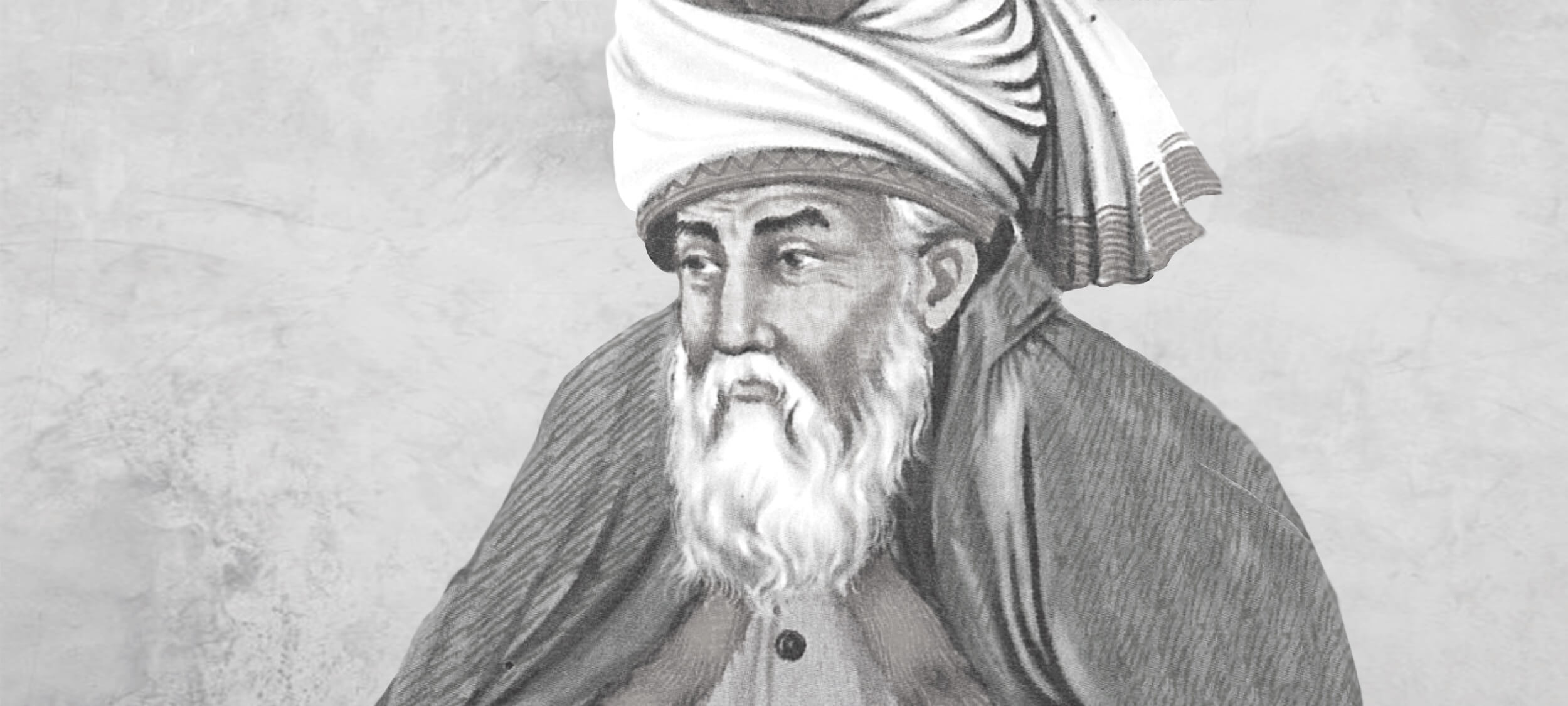I knew that when I started this challenge, it was likely that I would fall down a rabbit hole or two. I didn’t, however, anticipate that I would fall down quite so many in one week. But this week I delved into the work of Rumi, considered to be one of the greatest mystical poets of all time. And between mysticism, Sufism, the Whirling Dervishes, and bhakti, among many other topics, there was a lot to take in this week. So let’s jump right in.
Rumi, as he’s commonly known, was a 13th century poet, scholar, theologian, and preacher. He was born in 1207 in either present day Afghanistan or Tajikistan, but emigrated with his family at a young age due to political instability in the region. After years on the road as an immigrant, he ultimately settled in Konya (modern day Turkey). His father was an academic and preacher, and he passed these responsibilities on to his son when he died in 1231. Rumi continued to train as a preacher, but he also became a highly respected Islamic teacher and jurist.
It was in 1244 that Rumi met a man who would change his life. Shams al-Din Mohammad, commonly referred to as just Shams, was a wandering mystic and spiritual holy man. There are a lot of stories about how they met, but my favourite goes like this. Rumi is reading in public one day when an old and unkempt man asks him about the book. “It’s something that you will not understand,” Rumi replies derisively. In an instant, the book bursts into flames. “What happened?!” he exclaims. “Something you will not understand,” the old man replies. If that’s not an adorable meet cute then I don’t know what is.
But it was more than just a meet cute. From that point on, Rumi and Shams, the old man, became nearly inseparable. They spent weeks together in seclusion, teaching each other principles of Sufism, the mystical branch of Islam. And for two years, they formed an intense and powerful bond. Which as you can imagine, led to a lot of friction and jealousy among the rest of Rumi’s disciples. Eventually, Shams was sent away, but Rumi became so distraught over his absence, Shams was quickly brought back to Konya. It didn’t last. In 1248, Shams disappeared once more. And this time, he did not return. Modern scholars are divided as to what actually happened to him. But a popular theory is that he was murdered by Rumi’s son and his followers.
Regardless of Sham’s ultimate fate, he still had a profound impact on Rumi. It is said that in meeting Shams, Rumi transformed from a stodgy academic into a mystical poet. He went on to write over 70,000 verses, and many of them were signed with the name “Shams”. His two great works are the six-volume Masnavi and the epic Divan-i Shams-i Tabrizi. Yes, that’s right. Rumi named one of his major works after Shams. He also wrote some of the most effusive and passionate love poems I’ve ever read.
Sweetly parading you go my soul of soul, go not without me;
life of your friends, enter not the garden without me.
Sky, revolve not without me; moon, shine not without me;
earth travel not without me, and time, go not without me.
With you this world is joyous, and with you that world is joyous;
in this world dwell not without me, and to that world depart not without me.
Vision, know not without me, and tongue, recite not without
me; glance behold not without me, and soul, go not without me.
The night through the moon’s light sees its face white; I am
light, you are my moon, go not to heaven without me.
Naturally, there is a lot of speculation about the exact nature of the relationship between Rumi and Shams. However, looking into this question proved to be another whole rabbit hole of its own. Specifically, it quickly became clear that speculation about whether or not they were lovers is a very modern, and in particular, a very western interpretation. I could write a whole separate essay about what I’ve learned this week about the historical differences between western and eastern perceptions and understandings of intimacy. However, I also found a great article that sums it up really well. Certainly far better than I ever could. You can find that here if you’re interested.
Regardless, it is indisputable that Shams had a dramatic affect on Rumi’s life. Rumi spent the next several decades pouring out his grief over losing his beloved into his poetry. He used his writings to muse about the very nature of life, love, and death. To emphasize the transcendental power of spiritual love and devotion to reveal the truth of reality. Of how to become one with God and be liberated from earthly concerns. He and his writings became so popular that when he died in 1273, his funeral was notably attended by disciples of all the major religions of the time, including Islam, Judaism, and Christianity. Today, he is still one of the most popular and widely read poets in history.
I must confess that I did not read the entirety of his body of work this past week. It’s just too large. However, I did read several poems, including many that were about Shams and their love. My favourite, however, was called “The Greek-Chinese Painting Competition”. It describes a competition between a group of Greek artists and a group of Chinese artists to create the most beautifully painted room in the Sultan’s palace. One group uses the most exquisite paints to create the most beautifully painted room. The other group scrubs down the walls and removes all the filth and dirt so that the beauty that already exists in the palace is able to be reflected back at observers. It is a beautiful poem that is still shockingly relevant today.
There is so much more to talk about when it comes to Rumi, but I promised myself that I wouldn’t write another 1,600 word essay this week. So all I will say is this. The Golden Age of Persian poetry continues to be an incredible adventure of discovery. It is simply extraordinary how much there is to learn, even week to week. I’ll be back next week with the last entry in this series. I’ll be taking a look at Shahnameh by Ferdowsi, often called the Persian Homer. I love Homer and The Iliad, so this should be fun. See you next week!
One last fun fact. Rumi’s son, Sultan Walad, went on to found the religious order known today as the Whirling Dervishes. And yes, that was another whole rabbit hole. They never seem to end…
Suggestions for artists I should check out? Please contact me with your ideas. I hope you enjoyed your daily helping of art!



